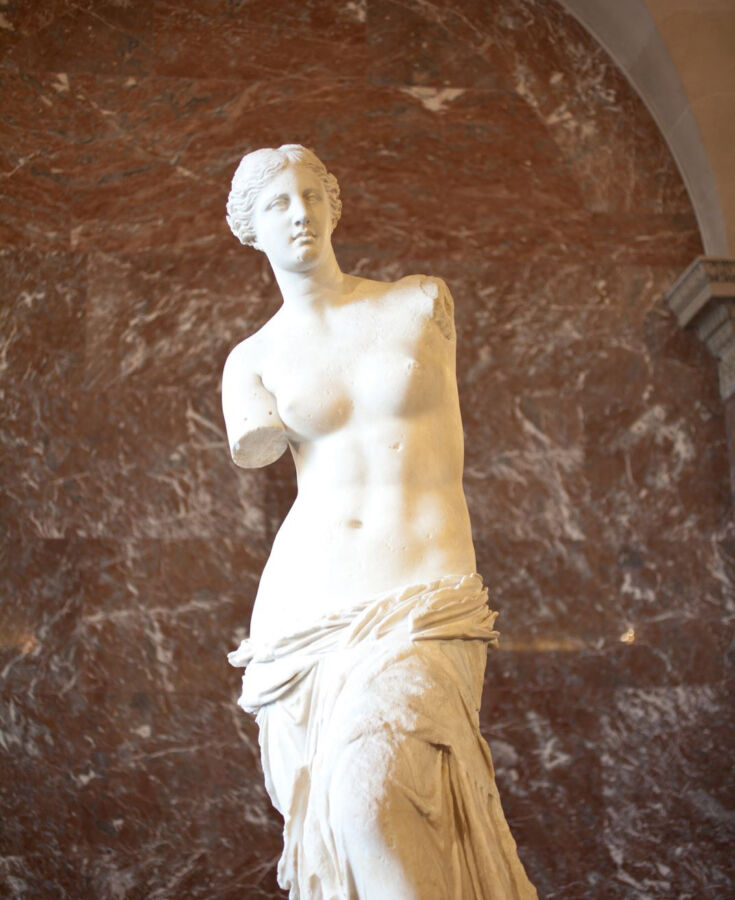The Venus de Milo — the goddess of love, sculpted in about 100 BC — sums up all that ancient Greece stood for.
As America continues to suffer crisis upon crisis, it has never been more important to broaden our perspectives and learn about the people and places that shape our world. And for me, one of the great joys of travel is seeing art masterpieces in person. Learning the stories behind great art can shed new light on our lives today. Here’s one of my favorites.

The Venus de Milo created a sensation when it was discovered in 1820, on the Greek island of Milos. Europe was already in the grip of a classical fad, and this statue was a hit. The ancient Greeks pictured their gods in human form — which meant that humans are godlike. Venus’ well-proportioned body embodied the balance and orderliness of the Greek universe.
Split Venus down the middle from nose to toes and see how the two halves balance each other. Venus rests on her right foot (that contrapposto pose so popular with classical sculptors). She then lifts her left leg, setting her whole body in motion. It’s all perfectly realistic: As the left leg rises, her right shoulder droops down. And as her knee points one way, her head turns the other. Despite all this motion, the impression is one of stillness, as Venus orbits slowly around a vertical axis. The twisting pose gives a balanced S-curve to her body. The balance between fleeting motion and timeless stability made beauty.
Other opposites balance as well, like the smooth skin of the upper half of her body that sets off the rough-cut texture of her dress. She’s actually made from two different pieces of stone plugged together at the hips (you can see the seam). The face, while realistic and anatomically accurate, is also idealized — like a goddess, she’s too generic and too perfect. This isn’t any particular woman, but Everywoman — all the idealized features that appealed to the Greeks.
The statue became famous for a number of reasons. Venus’ classic beauty was seen as the ideal of female grace. The statue is a rare Greek original, not a Roman copy. Its sudden discovery (by a humble Greek farmer) made great news copy.
Most of all, Venus brought with her an air of mystery. Who was this beautiful woman? She’s probably Venus, but no one knows for sure. What is she thinking? Her expression is alluring yet aloof. Her dress dangles suggestively; she’s both modestly covering her privates but hinting at more.
And what were her arms (which were never found) doing? No one knows. Some say her right arm held her dress, while her left arm was raised. Others think she was hugging a statue of a man or leaning on a column. I say she was picking her navel.
Regardless, though Venus’ arms have been lost over the centuries, her eternal beauty remains intact.
This art moment — a sampling of how we share our love of art in our tours — is an excerpt from the new, full-color coffee-table book, “Europe’s Top 100 Masterpieces,” by Rick Steves and Gene Openshaw. Please support local businesses in your community by picking up a copy from your favorite bookstore, or you can find it at our online Travel Store. To enhance your art experience, you can find a clip related to this artwork at Rick Steves Classroom Europe; just search for Louvre.